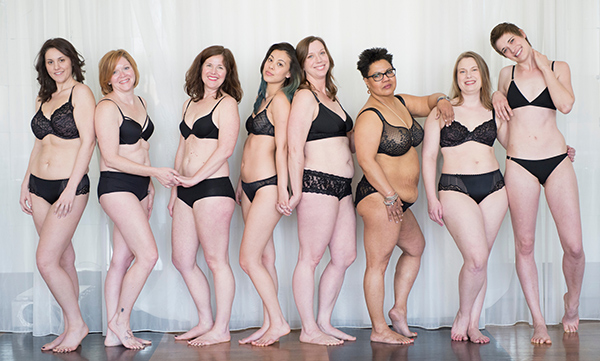Beautiful Bodies?
By ALI CUDBY
I was fascinated by a recent article, discussing women’s ideas about body size, in Salon.com. Part of the article examines the impact of media on how women see themselves.
I’ll summarize…it’s unhealthy.
Here are a few highlights:
On average, women in North America say their ideal body weight is 13 to 19 percent below their medically ideal weight.
Women’s sense of self-image is influenced by their sense of other people’s opinions.
Even though having a supermodel’s body is a physical impossibility for 95% (or more) of the human population, there is a belief that women can – and should – sculpt their bodies to be runway-ready.
Yet beauty is not just in the eye of the beholder, it’s in the eye of the cultural norm of our time.

“The women in Renoir’s paintings were seen as beautiful, and their BMIs were about 29,” he explains. As recently as 125 years ago, what we would now call overweight and even verging on obese was considered desirable and attractive.
The winners of the earliest Miss America pageants in the 1920s, for instance, had BMIs around 22. By contrast, a contestant in the 2014 Miss America pageant, Indiana’s Mekayla Diehl, has been praised for having a “normal”-sized body, visibly fleshier than those of the other contestants; she wears a size 4 and her BMI is around 18, which makes her underweight on the BMI chart. But she’s positively glowing with health compared with other contestants, whose average BMI these days is a dangerously low 16.9.
As recently as the 1950s, one of America’s most glamorous stars was Marilyn Monroe, who wore a size 10 and was at the time considered one of the sexiest women in the world. At five foot five and 140 pounds, her BMI hovered around 23—a far cry from today’s much skinnier standard.”
What we see shapes what we think. And that’s where lingerie retailers come into the equation.
Retailers – both brick-and-mortar and virtual – get to control the images of beauty they show to their customers and the outside world; the models chosen for websites, the mannequins displayed in windows, even the employees seen in the business.
All of these images matter. They are cataloged into women’s constantly evolving mental calculation of “beautiful” and even “acceptable.”
When I was researching my book Busted! The Fab Foundations Guide to Bras That Fit, Flatter and Feel Fantastic, I remember talking to Sarah Weiner of Trousseau, in Vienna, VA. She deliberately employs women with a wide spectrum of body sizes, so every shopper who enters the store sees at least one employee whose body resembles theirs. She wants all her customers to feel welcome in the store, and Sarah knows words are not enough to convey the message.
Recently, TJ Kliefoth, of Derriere de Soie in Charlottesville, VA, shared her latest win, in which she offered her customers the opportunity to be featured in a photo shoot for the store. By capturing an array of demographics – age, bra size, skin color, etc. – her advertising says to every potential customer, “You are represented here.”

Even when I created the Fab Foundations branding, I wanted three images to represent the spectrum of women. (This wasn’t an easy feat.) It was important to me that all women feel represented in my work.

Lingerie businesses don’t have a moral obligation to represent all women. It is up to business owners to decide what they stand for, and a wide spectrum of bodies is not for everyone.
But it’s worth asking a question:
If every image in your business sends a message to the women you serve, what does your message say?
Portions excerpted from “Body of Truth: How Science, History, and Culture Drive Our Obsession with Weight—and What We Can Do About It” by Harriet Brown. From an article in Salon.com, reprinted courtesy of Da Capo Lifelong Books.

